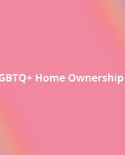Buying a home is an exciting milestone, but it often comes with unexpected expenses that can add up quickly. For many LGBTQ+ buyers, who may already face financial hurdles such as wage gaps, relocation challenges, or limited access to family support, the burden of closing costs can feel overwhelming. The good news? These costs aren’t always set in stone. With the right strategy, it’s possible to negotiate with sellers so they cover some — or even all — of your closing expenses, making your path to homeownership smoother and more affordable.
Understanding Closing Costs
Closing costs are the various fees and expenses due at the end of a real estate transaction. They typically include loan origination fees, appraisal fees, title insurance, attorney’s fees, and escrow charges. On average, buyers can expect to pay between 2–5% of the home’s purchase price in closing costs. For a $300,000 home, that could mean $6,000–$15,000 — a hefty sum on top of your down payment.
Why Seller-Paid Closing Costs Are Possible
Many sellers are motivated to close quickly, especially in a competitive or buyer-friendly market. Offering to cover a portion of the buyer’s closing costs can make their listing more attractive without reducing the purchase price. For LGBTQ+ buyers, negotiating this concession can free up cash for moving expenses, renovations, or building a financial cushion in your new home. Partnering with a custom home builder can also help transform that new space into one that truly reflects your personality and lifestyle.
Strategies for Negotiating Seller-Paid Costs
- Work With an Experienced Agent
Partnering with a real estate professional who understands both your financial goals and the LGBTQ+ homebuying experience is essential. They’ll know when and how to ask for seller concessions that won’t jeopardize your offer. - Target Homes on the Market Longer
Sellers with properties that have been sitting unsold for weeks or months may be more willing to negotiate. They may prefer to cover your closing costs rather than risk lowering their price again. - Balance Price and Concessions
In competitive markets, you may need to offer the seller their asking price (or close to it) in exchange for help with closing costs. This way, the seller feels they’re not losing out financially, while you benefit from reduced upfront expenses. - Be Clear With Your Lender
Some loan programs have limits on how much sellers can contribute toward closing costs. FHA, VA, and conventional loans all have specific guidelines, so check with your lender to make sure the negotiation works with your financing plan. - Leverage Multiple Offers Wisely
If you’re in a market with less competition, don’t hesitate to use your buying position as leverage. Asking for seller-paid expenses could set your offer apart while still keeping the deal favorable for everyone involved.
Building a Strong Foundation for LGBTQ+ Buyers
Negotiating seller-paid closing costs isn’t just about saving money — it’s about empowering LGBTQ+ buyers to step into homeownership with confidence. Reducing these upfront expenses can make the difference between renting for another year or finally getting the keys to your own home. With thoughtful planning, market awareness, and an agent who truly has your back, your dream of homeownership can be more attainable than you think.
This article was written with insights and resources provided by GayRealEstate.com, the nation’s leading source for LGBTQ+ home buying and selling support.



